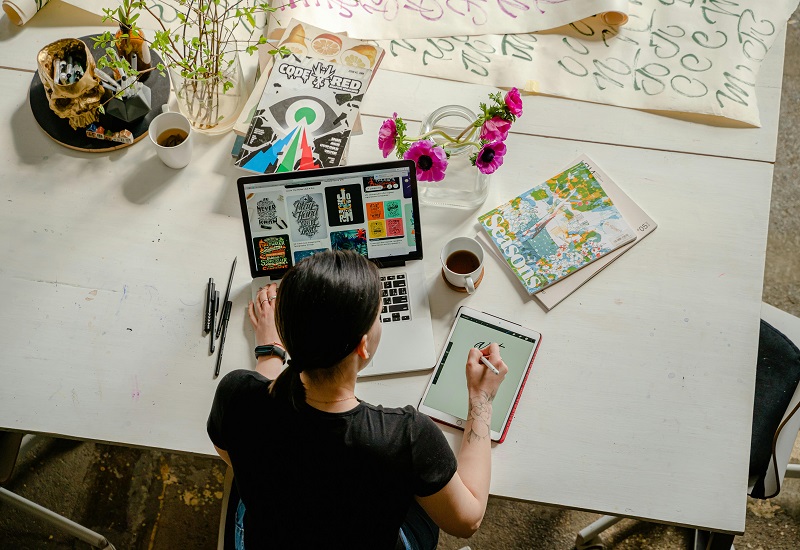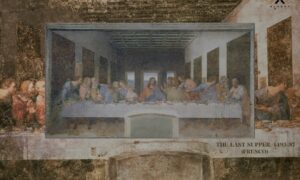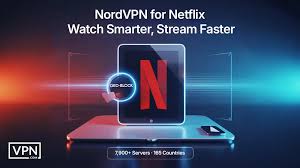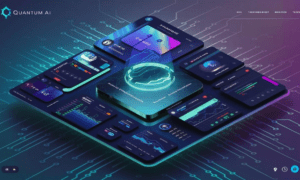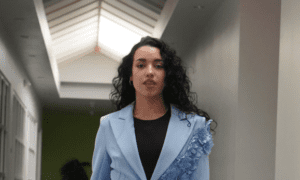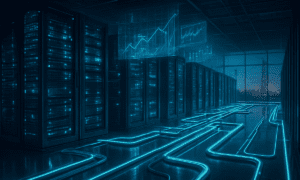Digital art are seriously changing the digital art landscape, transforming the concepts of ownership and authorship. By ensuring a secure and transparent way to assert ownership and authorship, NFTs are empowering artists and transforming the art market. As we move forward, the continued evolution of NFTs and blockchain technology will undoubtedly bring even more exciting opportunities and challenges for digital artists and collectors alike. The revolution in digital art is just beginning, and NFTs are at the forefront of this transformative journey.
Understanding NFTs and Their Role in Digital Art:
To appreciate the impact of NFTs on digital art, it’s crucial to understand what NFTs are. Non-Fungible Tokens are digital tokens that represent ownership of a unique item or piece of content. Unlike cryptocurrencies such as Bitcoin, which are fungible and interchangeable, NFTs are one-of-a-kind. This uniqueness makes them ideal for representing digital art, as each piece can be distinctly identified and owned.
The Technology Behind NFTs:
NFTs are primarily built on blockchain technology, which ensures their uniqueness and authenticity. Blockchain is a decentralized ledger that records transactions across multiple computers, making it secure and tamper-proof. When an artist creates an NFT, it is recorded on the blockchain, along with metadata that describes the artwork. This record provides a permanent and unalterable proof of ownership, which is crucial for establishing authenticity in the digital realm.
NFTs and Digital Scarcity:
One of the most significant challenges in the digital art world has been the issue of digital scarcity. Before NFTs, digital art could be easily copied and shared, making it difficult for artists to control and monetize their work. NFTs solve this problem by creating a sense of scarcity. Each NFT is unique and cannot be replicated, ensuring that the owner possesses an original piece of digital art. This scarcity adds value to digital art, much like physical art pieces, and allows artists to sell their work at higher prices.
Revolutionizing Ownership in Digital Art:
NFTs are fundamentally changing the way ownership is perceived in the digital art world. Traditionally, owning digital art meant possessing a copy of a file, which could be duplicated infinitely. With NFTs, ownership is tied to a specific token on the blockchain, representing a unique piece of art. This shift has several profound implications for artists and collectors.
Establishing Provenance and Authenticity:
Provenance, or the history of ownership, is a critical aspect of art valuation. In the traditional art world, provenance can be traced through physical records and documentation. In digital art, provenance has always been a challenge due to the ease of duplication. NFTs address this issue by providing a clear and immutable record of ownership and transaction history on the blockchain. This transparency ensures that collectors can verify the authenticity of a digital artwork and trace its ownership back to the original artist.
Protecting Artists’ Rights:
NFTs empower artists to maintain control over their work, even after it has been sold. When an artist creates an NFT, they can embed smart contracts within it. These contracts can specify terms such as royalties, ensuring that the artist receives a percentage of sales each time the NFT is resold. This feature is revolutionary for digital artists, as it provides a continuous stream of income from their work, long after the initial sale. It also discourages unauthorized reproduction and distribution, protecting the artist’s rights and intellectual property.
Revolutionizing Authorship in Digital Art:
Authorship, or the recognition of the creator of a work, is another area where NFTs are making a significant impact. In the digital world, it has often been challenging for artists to assert their authorship due to the ease of copying and sharing. NFTs provide a robust solution to this problem, offering artists a new way to assert and maintain their authorship.
Creating a Direct Connection Between Artists and Collectors:
NFTs facilitate a direct connection between artists and their collectors. Traditional art sales often involve intermediaries such as galleries and auction houses, which can take a significant cut of the sale price. NFTs, on the other hand, are typically sold on decentralized marketplaces, where artists can interact directly with buyers. This direct connection not only allows artists to retain a larger portion of the sale price but also fosters a sense of community and engagement with their audience.
Enabling New Forms of Artistic Expression:
The unique properties of NFTs are also enabling new forms of artistic expression. Digital artists can experiment with interactive and dynamic art forms that evolve over time. For example, an NFT can be programmed to change its appearance based on external data, such as the weather or stock market trends. These dynamic NFTs offer a level of interactivity and engagement that traditional art forms cannot match. Moreover, artists can collaborate across disciplines, combining visual art with music, animation, and virtual reality to create immersive experiences.
The Broader Implications for the Art World:
The rise of NFTs is not only impacting digital artists but also having broader implications for the entire art world. Traditional artists are beginning to explore NFTs as a new medium for their work, and galleries and museums are incorporating NFTs into their collections and exhibitions.
Bridging the Gap Between Digital and Physical Art:
NFTs are helping to bridge the gap between digital and physical art. Some artists are creating hybrid works that exist both in the digital and physical realms. For instance, an artist might create a physical painting accompanied by an NFT that represents the digital version of the artwork. This approach allows artists to reach a broader audience and explore new revenue streams while maintaining a connection to traditional art forms.
Democratizing the Art Market:
NFTs are democratizing the art market by making it more accessible to a wider audience. Traditional art collecting has often been limited to wealthy individuals and institutions due to the high cost of physical artworks. NFTs, however, can be purchased and traded by anyone with an internet connection and a digital wallet. This accessibility is opening up the art market to a new generation of collectors and enthusiasts, fostering greater diversity and inclusivity in the art world.
Challenges and Future Prospects:
While NFTs offer numerous benefits, they also come with challenges. The environmental impact of blockchain technology, particularly energy-intensive proof-of-work systems, is a significant concern. Additionally, the market for NFTs is still relatively new and volatile, with prices fluctuating dramatically. However, ongoing developments in blockchain technology, such as the transition to more energy-efficient proof-of-stake systems, are addressing some of these issues.
The Future of NFTs in Digital Art:
The future of NFTs in digital art looks promising, with continued innovation and adoption expected in the coming years. As technology evolves, we can anticipate more sophisticated and environmentally friendly solutions for creating and managing NFTs. Artists will continue to explore the creative possibilities offered by NFTs, pushing the boundaries of digital art and redefining authorship and ownership in the process.
Conclusion:
The NFT landscape has undergone a dramatic change in recent years. This change is primarily due to the advent of Non-Fungible Tokens (NFTs). These unique digital assets are revolutionizing the way artists assert ownership and authorship over their digital creations. NFTs provide a new level of authenticity, security, and monetization for artists, reshaping the entire digital art industry. In this article, we’ll explore how NFTs are changing digital art and the profound implications for artists worldwide.

